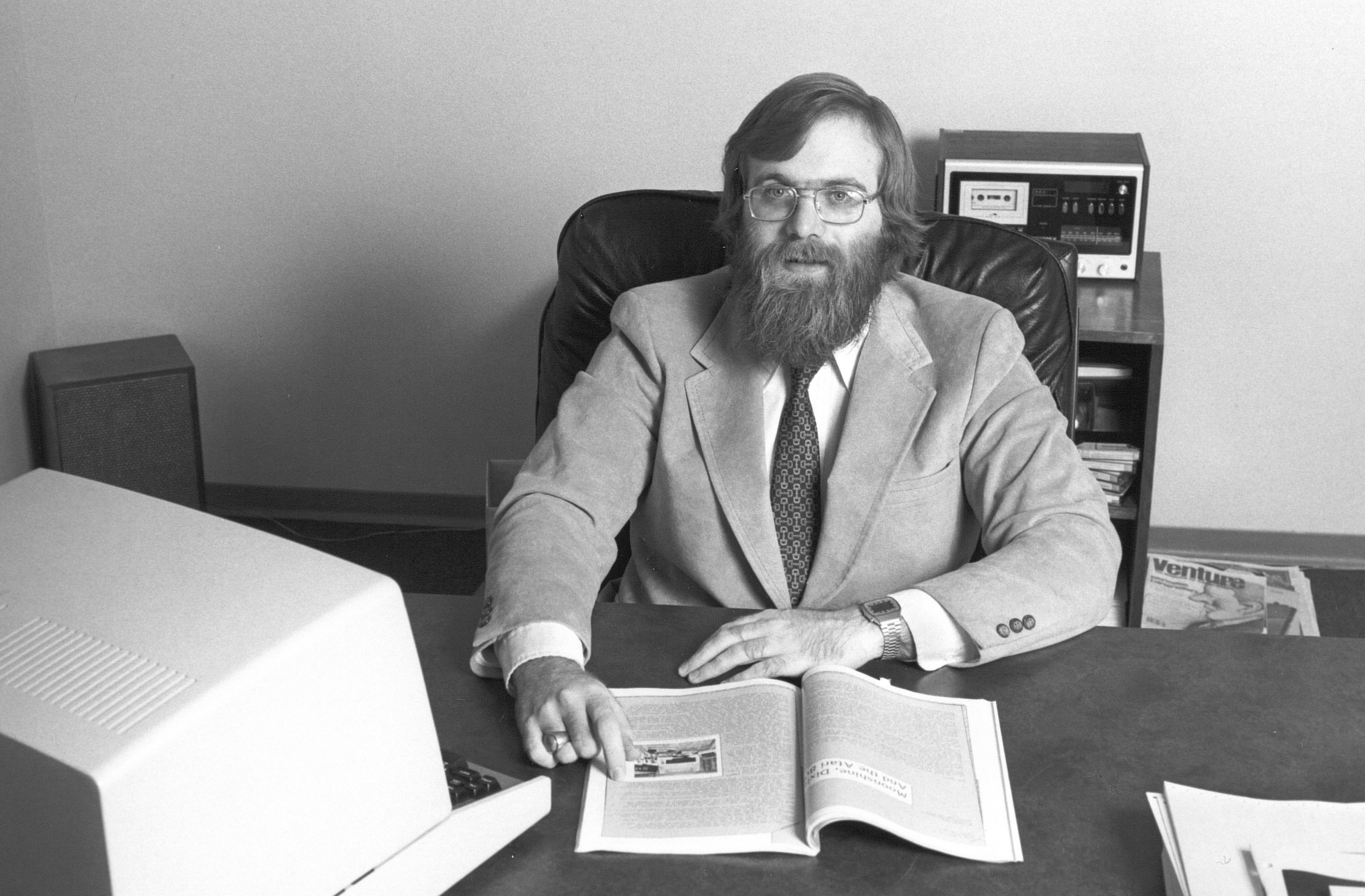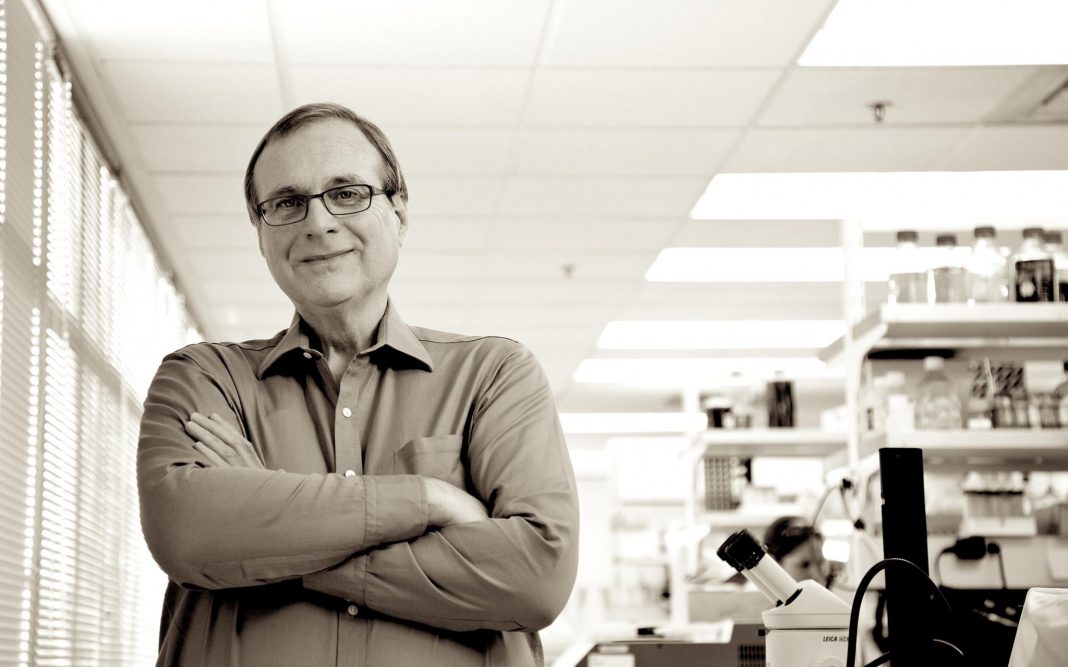Paul G. Allen, the philanthropist, investor, and Microsoft co-founder who died yesterday at age 65 in Seattle of complications of non-Hodgkin’s lymphoma, is being remembered for his interest in, and passion for, advancing science, as well as technology, education, conservation, the arts, and community improvement.
During his lifetime, Allen gave more than $2 billion to various causes—including the Seattle bioscience institute bearing his name that pursues research through its three divisions, the Allen Institute for Brain Science, the Allen Institute for Cell Science, and The Paul G. Allen Frontiers Group, which is dedicated to exploring and funding new landscapes in bioscience.
Celebrating the opening of the Allen Institute’s facility in Seattle’s South Lake Union neighborhood in 2015, Allen recalled the Institute’s beginnings from a retreat of top neuroscientists in 2002, held on a yacht in the Bahamas.
“I asked a fundamental question: What can be done to move the whole field forward? That sparked plenty of different points of view. Some of the attendees said I could build another fantastic building to house an institute like a number of others that have already been done.”
But the idea of a traditional research institute had limited appeal, Allen said. “I was trying to find a new metaphor, a new approach that would be really revolutionary.
“The idea took root that we should do a complete and thorough survey of genetics of the mouse brain,” he recalled. “We have executed not just that survey, but also the human brain, the developmental mouse and human brain, the spinal cord, and more. That’s a pretty amazing achievement to accomplish all that in just over 10 years. And those resources give investigators around the world a huge head start in their research, and they often use it on a daily basis.”
The institute employs more than 470 employees from 40 different scientific disciplines. Just last month, researchers at the Institute published a study detailing their use of machine learning to train computers to see parts of the cell the human eye cannot easily distinguish.
‘Vision and Insight’
“Paul’s vision and insight have been an inspiration to me and to many others, both here at the Institute that bears his name, and in the myriad of other areas that made up the fantastic universe of his interests. He will be sorely missed,” Allan Jones, Ph.D., the Allen Institute’s president and CEO, said in a statement.
The Allen Institute for Brain Science was established in September 2003, when Allen committed $100 million in seed funding and a single project at its launch, the Allen Mouse Brain Atlas, a multimodal atlas of the adult mouse brain, featuring anatomic and genomic data. Allen ultimately supported the Institute with $500 million.
In 2013, Allen launched the Allen Institute for the Artificial Intelligence, with the goal of exploring critical questions in AI. A year later, he gifted $100 million to launch the Allen Institute for Cell Science. Its inaugural project, the Allen Cell Observatory, was designed to accelerate disease research by creating predictive cell models.
Speaking with GEN in 2014, Dr. Jones recalled how two years earlier, Allen’s fascination with complexity in biology prompted him and Brain Institute leadership to begin exploring whether they could create a similar research institute focused on cells.
A meeting with experts convinced the Allen institute that it would need a leader well-versed in connecting molecular activity to cellular behavior, and appointed Alan F. (Rick) Horwitz, Ph.D., as executive director of the Allen Institute for Cell Science, a position he has held since.
“He possessed a remarkable intellect and a passion to solve some of the world’s most difficult problems, with the conviction that creative thinking and new approaches could make profound and lasting impact,” Bill Hilf, CEO of Allen’s investment firm Vulcan Inc., said in a joint statement co-issued by the Allen Institute and the Allen Institute for Artificial Intelligence, as well as by Allen’s two sports teams, the Seattle Seahawks and Portland Trailblazers, and his space transportation company Stratolaunch Systems.
“We will continue to work on furthering Paul’s mission and the projects he entrusted to us. There are no changes imminent for Vulcan, the teams, the research institutes, or museums,” Hilf added. “Millions of people were touched by his generosity, his persistence in pursuit of a better world, and his drive to accomplish as much as he could with the time and resources at his disposal.”

‘He Changed the World’
More recently, those resources included $125 million that Allen committed in February to his artificial intelligence institute toward “Project Alexandria,” an effort to advance the common-sense capabilities of AI by aggregating data from images and text via machine learning, as well as crowd-sourced common sense statements.
“If we want AI to approach human abilities and have the broadest possible impact in research, medicine, and business, we need to fundamentally advance AI’s common sense abilities,” Allen stated at the time.
In 1975 Allen, then a Honeywell employee, joined with his friend Bill Gates, a Harvard sophomore, to form Microsoft soon after the introduction of the Micro Instrumentation and Telemetry Systems (MITS) Altair, a pioneer “personal computer” consisting of a build-it-yourself kit for hobbyists.
The two men created the first personal computer programming language for the Altair, called BASIC, and licensed it to Albuquerque, NM-based MITS. Allen joined MITS as its director of software development, and was later joined there by Gates. The two created a partnership originally called Micro-Soft, which finished its first year with $16,005 in revenues and three employees, Allen, Gates, and Ric Weiland.
“Paul was a true partner and dear friend. Personal computing would not have existed without him,” Gates said yesterday in a statement.
Added Microsoft CEO Satya Nadella, “As co-founder of Microsoft, in his own quiet and persistent way, he created magical products, experiences, and institutions, and in doing so, he changed the world.”
Allen left Microsoft in 1982, soon after he was diagnosed with Hodgkin’s disease. He was also treated in 2009 for non-Hodgkin’s lymphoma, only to see it return this year.
“My team of doctors has begun treatment of the disease and I plan on fighting this aggressively,” Allen said October 1 in a statement. “A lot has happened in medicine since I overcame this disease in 2009. My doctors are optimistic that I will see good results from the latest therapies, as am I.”
A data and applied scientist at Microsoft, Nikhil Yadala, was among numerous researchers worldwide who took to Twitter to remember Allen.
“Thank you for all that you have done and inspiring many others,” said Yadala, an undergraduate computer science major at Indian Institute of Technology (IIT) Guwahati. “I hope and look forward to days where ‘healthy longevity’ is as ubiquitous as personal computing today. People should not die from diseases/aging. We have a lot more to explore in this universe.”



